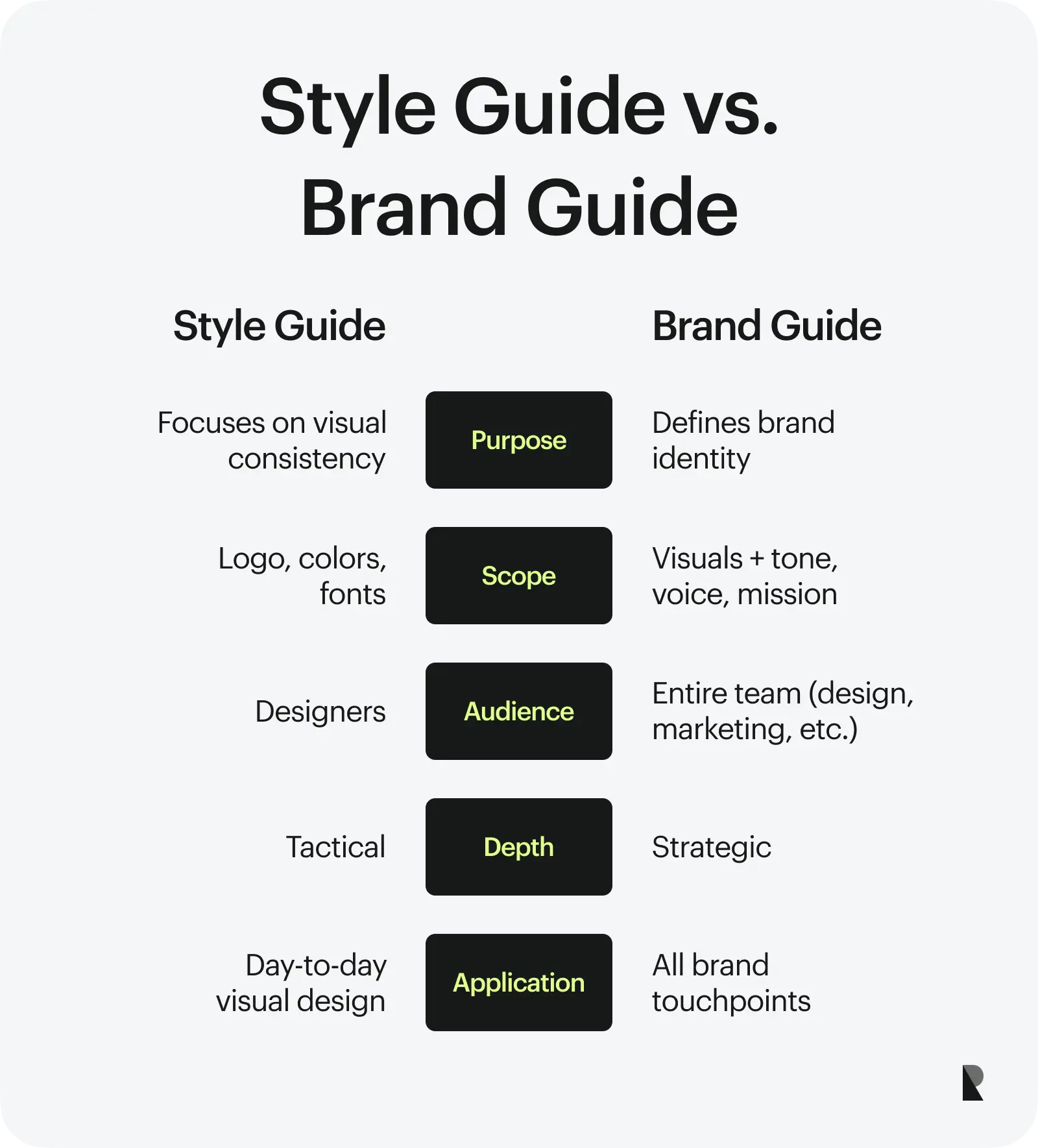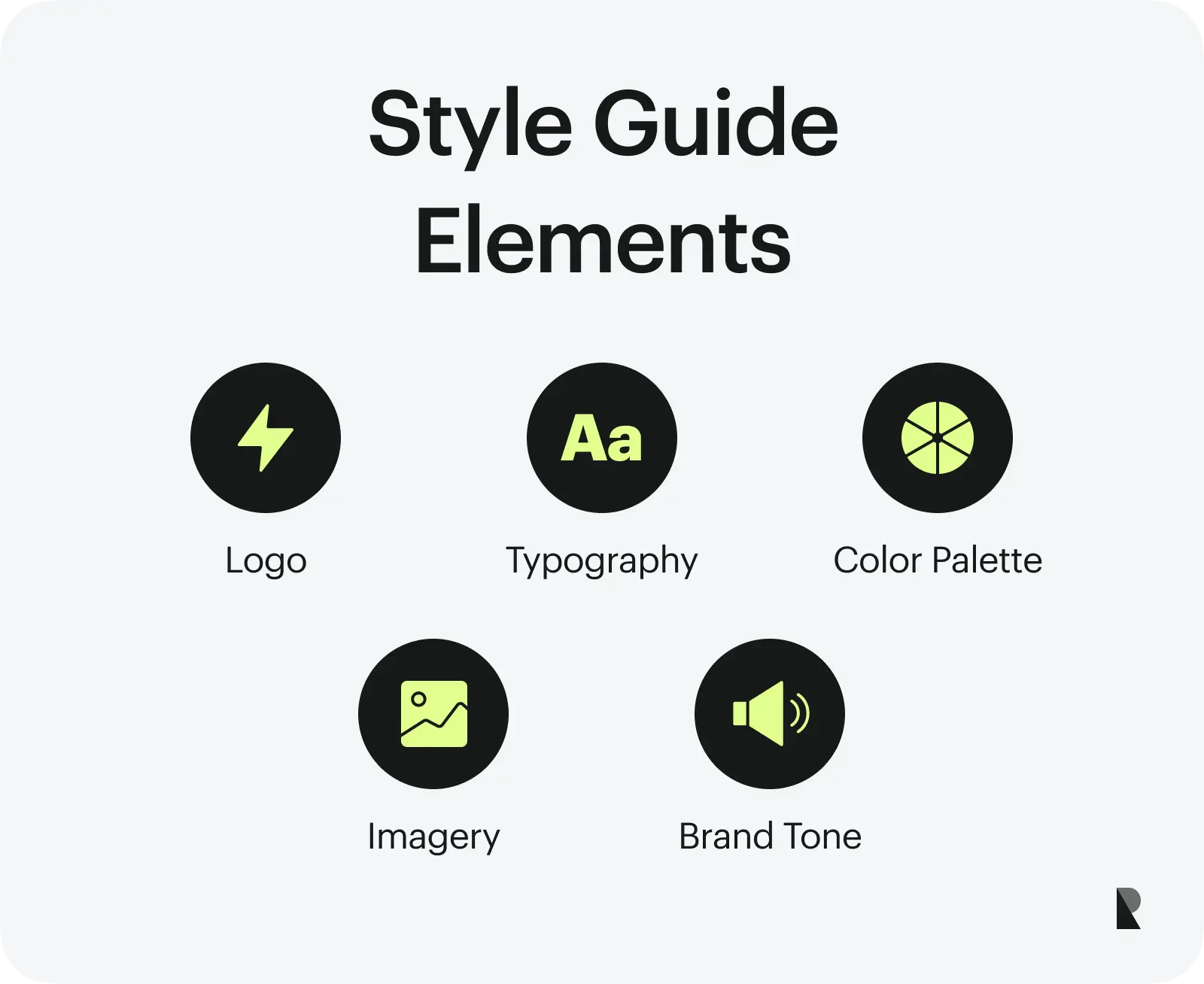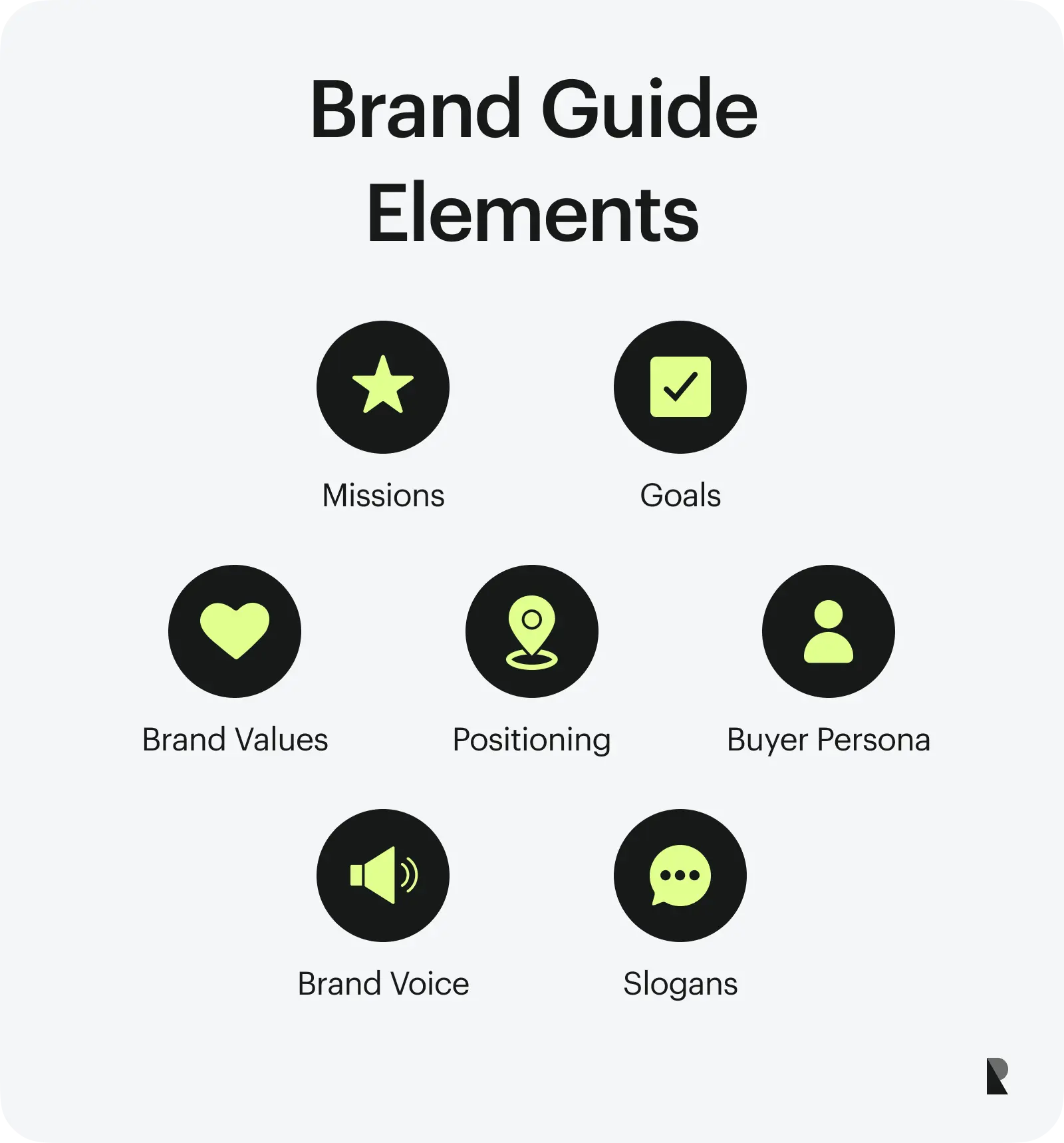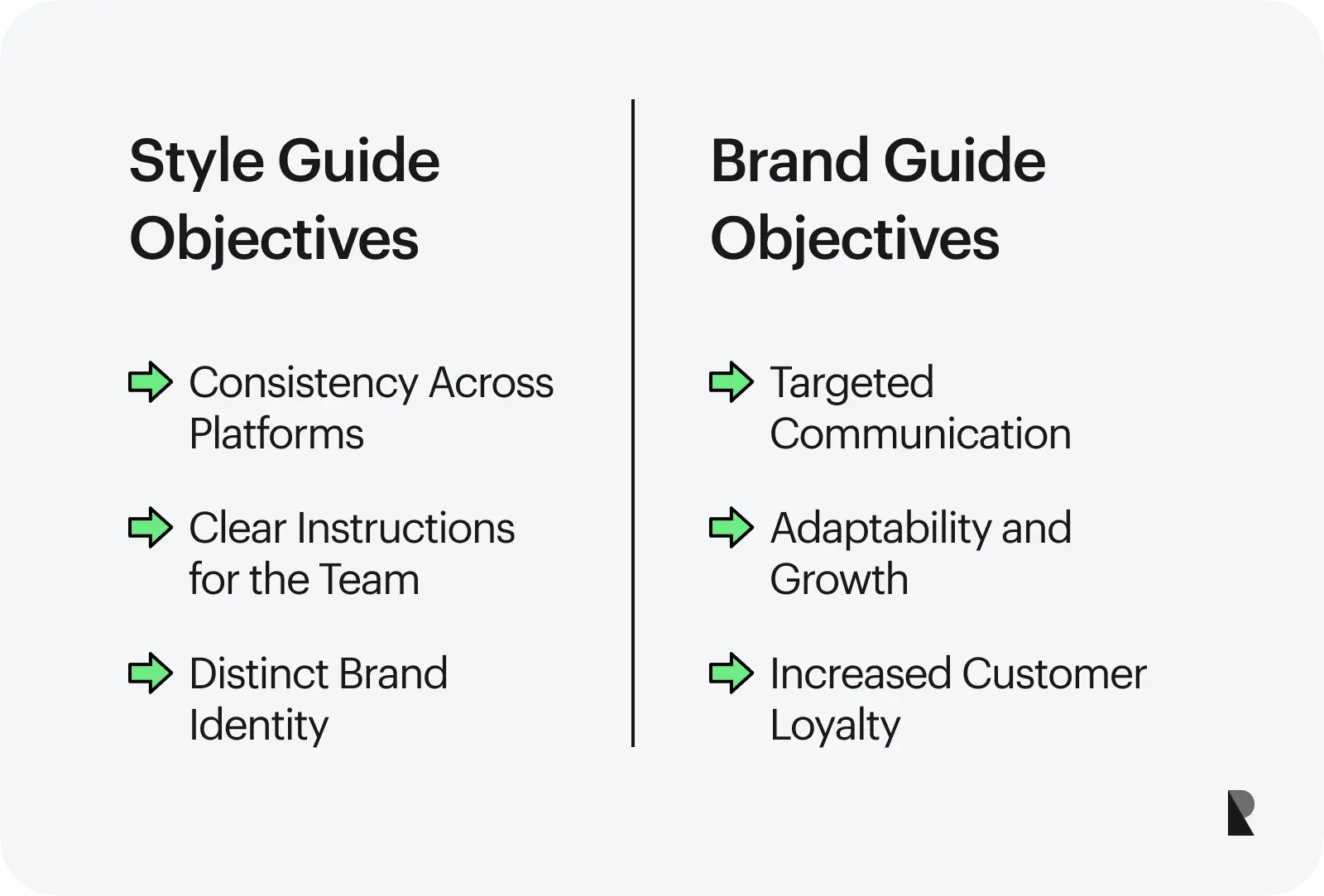Introduction
A successful brand is like a jigsaw puzzle where all the components need to be in place to form a nice picture. This time, we’re going to take a look at two important pieces of the puzzle: brand guides and style guides.
Despite the occasional confusion of these terms, they serve different purposes in shaping a brand's identity.

What's the difference between a style guide and a brand guide?
The primary objective of a style guide is to provide specific instructions to designers on aspects such as the optimal usage of the company logo, colors, and fonts.
Conversely, brand guidelines are much more comprehensive as they encompass the brand strategy. These guidelines cover both visual and verbal elements that define the overall look and feel of your brand.
Elements included in the style guide

While it may seem logical to include branding guidelines such as design and logo usage in a separate document, the best approach is to unify written and design style elements.
Brand History
The brand history summarizes the brand's origins and fundamental principles that help understand the company culture and objectives.
Logo
Guidelines for incorporating logos across various platforms encompass numerous elements, including size changes, color palettes, and specifications for blank spaces.
Typography
Maintaining a consistent brand identity involves using specific fonts, sizes, and styles to ensure brand uniformity across various platforms.
Color Palette
The color palettes consist of defined color codes and combinations used across social media platforms.
Image Recommendations
There are specific criteria for selecting images that are consistent with the brand's principles and uphold a coherent visual storyline.
Brand Tone
Brand tone serves a specific purpose of positioning the brand in various contexts, such as different media outlets and social channels.
Using a style guide is an effective method to communicate your message to your desired audience through a particular social media platform.
Elements included in the brand guide

Let us explore the main elements of a brand guide.
Missions
The brand mission is a clear statement outlined in the brand book that explains why a brand exists, who it serves, and what it offers.
Goals
Goals are clear targets that define what a brand aims to achieve. They consist of specific and measurable objectives accompanied by actionable steps and deadlines.
Brand Values
Brand values shape the identity of a brand and dictate its ethical and moral conduct in all its interactions with the public.
Positioning
A brand's distinctive place in the market sets it apart from the competition and helps to identify the target audience.
Buyer Persona
A buyer persona includes a variety of aspects such as age, location, purchasing habits, income level, and personal preferences.
Brand Voice
The brand voice is a broad concept that represents the brand's unique persona. While brand tone changes depending on the social media platform, the voice should stay consistent.
Slogans
Brief and memorable expressions that embody the essence of the brand.
Primary objectives of a brand guide and a style guide

Now, let’s explore the main objectives of any organization aiming for a clear and powerful brand.
Primary Objectives of a Brand Guide
- Strategic Messaging: Establish brand voice and messaging strategies tailored to target audiences.
- Market Positioning: Clarify the brand's unique characteristics and positioning in the market, i.e., what makes the brand and its offerings stand out compared to its competitors.
- Coherent Brand Storytelling: Craft a coherent brand narrative that seamlessly integrates the company's mission, values, and vision, creating a captivating and harmonious brand story.
Primary Objectives of a Style Guide
- Visual Consistency: Maintain a consistent visual identity throughout all digital and print materials by carefully defining typography, color usage, and logo applications.
- Content Clarity: Offer formatting guidelines, enhance readability and comprehension of written materials, and promote a professional image.
- Flexibility in Design: Incorporate design features that can be modified to suit different needs and enable originality and ingenuity, all while upholding the fundamental brand image, especially as technology advances.
Benefits Of Style Guides and Brand Guides

Now, let’s explore the distinct benefits of style and brand guides.
Benefits of Style Guides
- Consistency Across Platforms: Whether it's the company website, social media posts, or business presentations, style guides help ensure the brand's voice remains consistent, boosting its credibility.
- Clear Instructions for the Team: A style guide makes it easy for your employees to find the tools and marketing materials they need in one place.
- Distinct Brand Identity: Style guides ensure consistent use of visual and design elements, allowing the creation of a distinct brand identity across various platforms.
Benefits of Brand Guides
- Targeted Communication: Brand guides define the target audience and provide insights into their preferences and behaviors. This knowledge helps marketing teams to tailor their messages effectively.
- Adaptability and Growth: As businesses evolve, brand guides can be updated to reflect changes in the market or the company's mission.
- Increased Customer Loyalty: With a clear brand identity, your customers may only remain one-time clients and remember about your brand the second after they purchase.
Branding guides ensure that your company can establish its unique social media presence that goes beyond your products or services.
Should I start with one guide or create both from the beginning?
If you have just started building your social media presence, then you should focus on using a style guide to ensure a consistent tone and style across all social media platforms.
Once you have built your social media pages, opt for a brand guide. It will help you establish a deep emotional connection with your audience and customize your communication strategies for different customer segments.
Creating Brand Guidelines and Style Guide
Creating a brand guide and style guide involves
- defining the brand's vision,
- understanding the target audience and
- working with brand experts to design visual elements.
To develop a style guide, it's crucial to establish a consistent tone of voice, give clear instructions, and ensure uniformity across digital and print platforms.

Style guide for Proemion

Brand guide for Stable
Conclusion
A brand guide defines a company's identity and vision, while a style guide offers clear instructions for a consistent visual and verbal style across all platforms and materials.
Both guides ensure consistency across various platforms, like social media and websites, and are crucial for conveying the company's identity and mission to the target audience.
FAQ
What's the difference between a brand and a style guide?
The brand guide outlines a company's identity, vision, and values, whereas a style guide provides specific instructions for maintaining consistent visual and verbal communications.
Who typically utilizes a brand guide?
Marketing professionals, designers, and business partners.
Who is the main audience for a style guide?
Designers, writers, and content creators. The guide offers precise instructions for both visual and written elements.
Who is responsible for writing brand guidelines?
Marketing or branding division of a company.
What are the main reasons to develop a brand guide?
A brand guide communicates the brand identity and vision and offers clear instructions to help team members understand the company’s values.
Why is it essential to have a style guide?
A style guide can serve as a reference point when the broader plan is already well-established, and one needs to confirm specific details.
Nov 2, 2023
